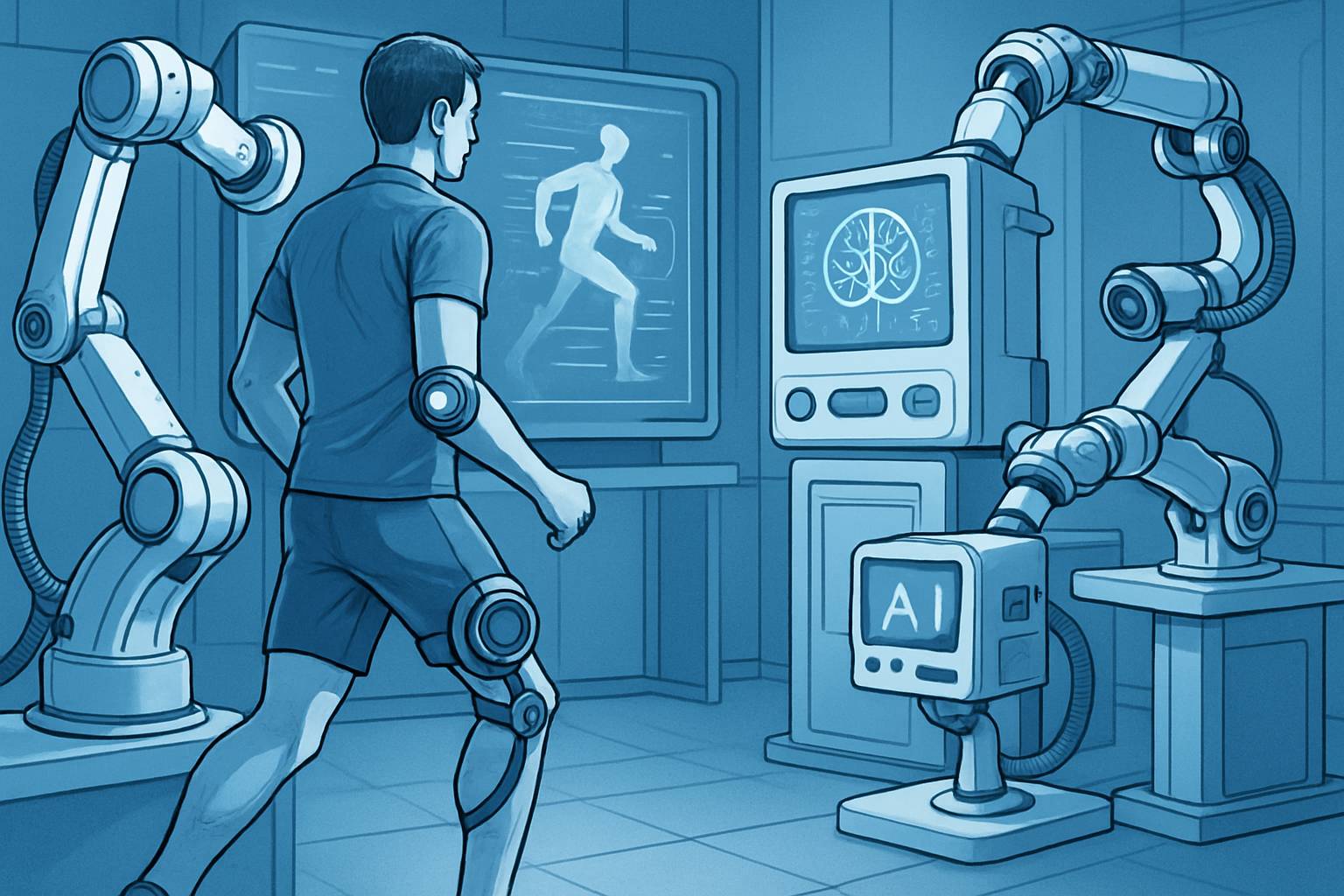
AI CERTS
3 hours ago
Medical Robotics Revolutionizes Patient Mobility
Furthermore, it highlights how AI, policy, and user voices intersect. Readers will gain actionable insight for strategy and patient care. Meanwhile, the story of restored walking powerfully illustrates innovation's human impact. Rehabilitation specialists, payers, and developers can all benefit from the lessons shared. Therefore, keep reading to see where evidence meets opportunity.
Medical Robotics Market Momentum
Global analysts now track double-digit growth for powered mobility devices. Grand View Research valued the 2024 exoskeleton market at about USD 498 million. Moreover, the firm predicts expansion to USD 1.25 billion by 2030, a 16.3% CAGR. Other reports show even larger baselines, yet they agree the curve is steep.

Drivers include favourable reimbursement, cheaper components, and relentless AI progress. Consequently, venture investors poured fresh capital into Wandercraft, Ekso, and Lifeward during 2024. Meanwhile, Medicare coding decisions created clearer revenue pathways for U.S. suppliers. Medical Robotics therefore shifted from speculative pitch decks to measurable unit sales. Hospitals are expanding Robotics Rehabilitation budgets. Broader Healthcare megatrends, such as aging populations, push demand higher.
The funding surge signals durable demand. In contrast, regulatory actions determine whether that demand converts to real access.
Regulatory And Reimbursement Shifts
Policy momentum accelerated in 2024. Ekso’s Indego Personal received HCPCS code K1007 after PDAC review. Additionally, CMS set payment ranges near USD 95,000 per device. Ekso CEO Scott Davis said the first Medicare payment was "a major milestone." These decisions legitimize Medical Robotics in payer eyes.
Wandercraft also secured an expanded FDA indication covering spinal cord injury Rehabilitation. Moreover, trials of its Eve personal model began at Bronx VA and Kessler Foundation. Lifeward, the ReWalk successor, reported Medicare claims paid in January 2024. Consequently, payers are cautiously accepting powered gait devices as durable medical equipment.
Clearer codes translate into predictable revenue. However, technology improvements must support these policies to secure lasting coverage.
Technological Breakthroughs Drive Adoption
Artificial intelligence now shapes sensing, balance, and personalized gait patterns. Wandercraft’s Atalante X uses onboard learning algorithms to keep users upright without crutches. Similarly, KAIST’s WalkON F1 autonomously approaches its user and climbs stairs. Furthermore, an April 2025 preprint demonstrated a brain-computer interface controlling an exoskeleton with bilateral feedback. Medical Robotics research now explores brain-computer links. Self-balancing control shortens inpatient Rehabilitation sessions.
- WalkON F1 reached 3.2 kph while handling stairs.
- BCI trials delivered real-time sensory feedback to both legs.
- Atalante systems logged more than 14 million therapeutic steps.
These advances reduce clinician burden and expand scenarios outside structured clinics. Consequently, developers target personal models light enough for community ambulation. However, battery life, terrain variability, and 50-kilogram prototypes still limit mainstream rollout.
Emerging features show clear promise. Nevertheless, clinical evidence must validate that promise against rigorous endpoints.
Clinical Impact And Evidence
Clinicians increasingly report functional gains during exoskeleton-assisted Rehabilitation sessions. Wandercraft claims over 14 million therapeutic steps across 2,500 users. Moreover, intensive walking practice can improve cardiovascular health and bowel regularity. Users also describe psychosocial benefits from eye-level conversations and improved confidence. Medical Robotics outcomes range from cardiovascular gains to social inclusion.
However, independent randomized trials remain scarce. Researchers need multi-center studies comparing Exoskeletons with conventional therapy or functional electrical stimulation. Meanwhile, safety data look encouraging, with few serious adverse events reported. Therefore, evidence quality is rising but still incomplete.
Preliminary outcomes justify broader trials. Consequently, stakeholders must also examine economic and service challenges.
Persistent Barriers And Risks
Even funded devices carry high ownership costs. List prices often approach USD 100,000 before training and maintenance. Additionally, The Verge detailed how a minor wiring fault immobilized a ReWalk user for months. Service contracts and spare parts remain patchy, especially after warranties expire. Sustainability concerns may slow Medical Robotics if unresolved.
In contrast, payer approvals vary among Medicare Administrative Contractors and private insurers. Consequently, some eligible users still wait years for coverage decisions. Device weight, speed, and battery duration also constrain outdoor independence. Moreover, regulatory indications exclude patients with higher cervical injuries today. Unexpected downtime raises liability for Healthcare providers.
Cost and service hurdles threaten sustained adoption. However, coordinated strategies could mitigate several of these issues.
Strategic Outlook For Stakeholders
Medical Robotics companies now prioritize scalable service networks. Partnerships with major prosthetic distributors could streamline maintenance workflows. Moreover, value-based contracts may tie payments to documented functional outcomes. Clinicians should enroll patients in ongoing registries to capture real-world evidence.
Payers can leverage early CMS data when modeling long-term cost offsets from reduced complications. Additionally, cross-disciplinary training will help therapists integrate sophisticated Exoskeletons into daily practice. Professionals can deepen expertise through the AI+ Robotics™ certification program covering safety and policy. Consequently, aligned incentives could accelerate equitable access across Healthcare settings.
Coordinated action turns prototypes into standard care. Meanwhile, informed leaders must track rapid updates from Medical Robotics innovators.
AI-enhanced exoskeletons already help paralyzed people reclaim standing and stepping. Regulatory wins, improving evidence, and fresh financing suggest sustainable momentum. However, cost, service, and indication gaps still restrain scale. Therefore, multi-stakeholder collaboration will determine whether Medical Robotics reaches every eligible patient. Clinicians, payers, and developers should monitor upcoming BCI trials and reimbursement rulings closely. Consequently, those armed with up-to-date skills can drive smarter adoption strategies. Act now by earning the AI+ Robotics™ credential and shape tomorrow’s accessible mobility landscape.



